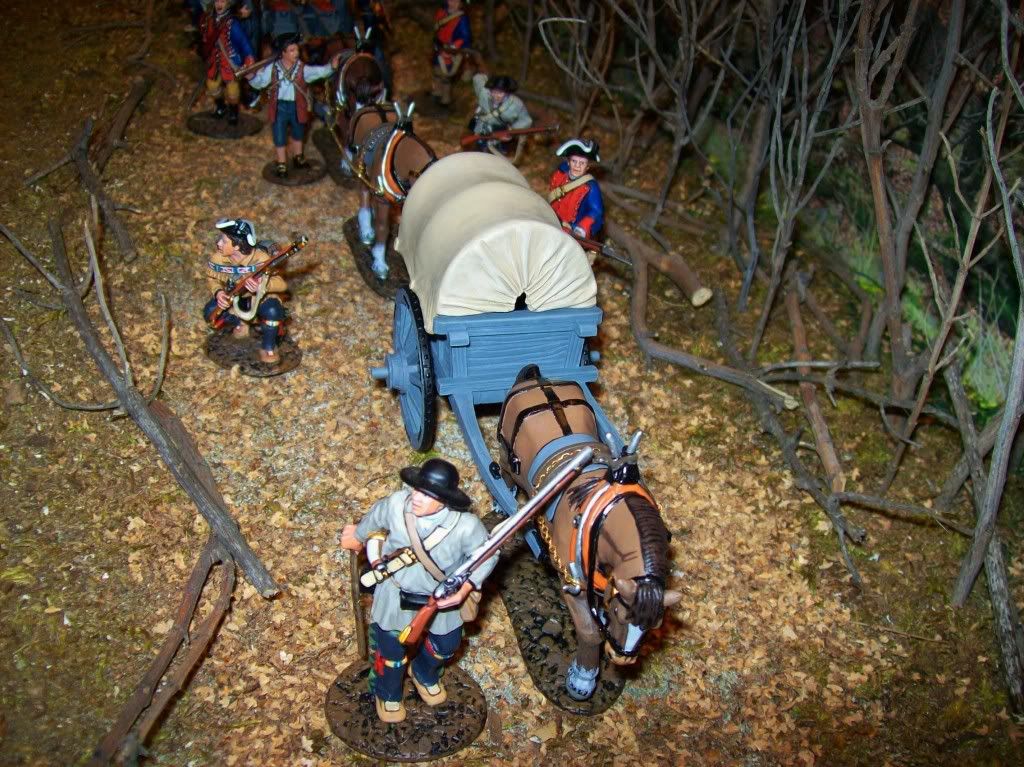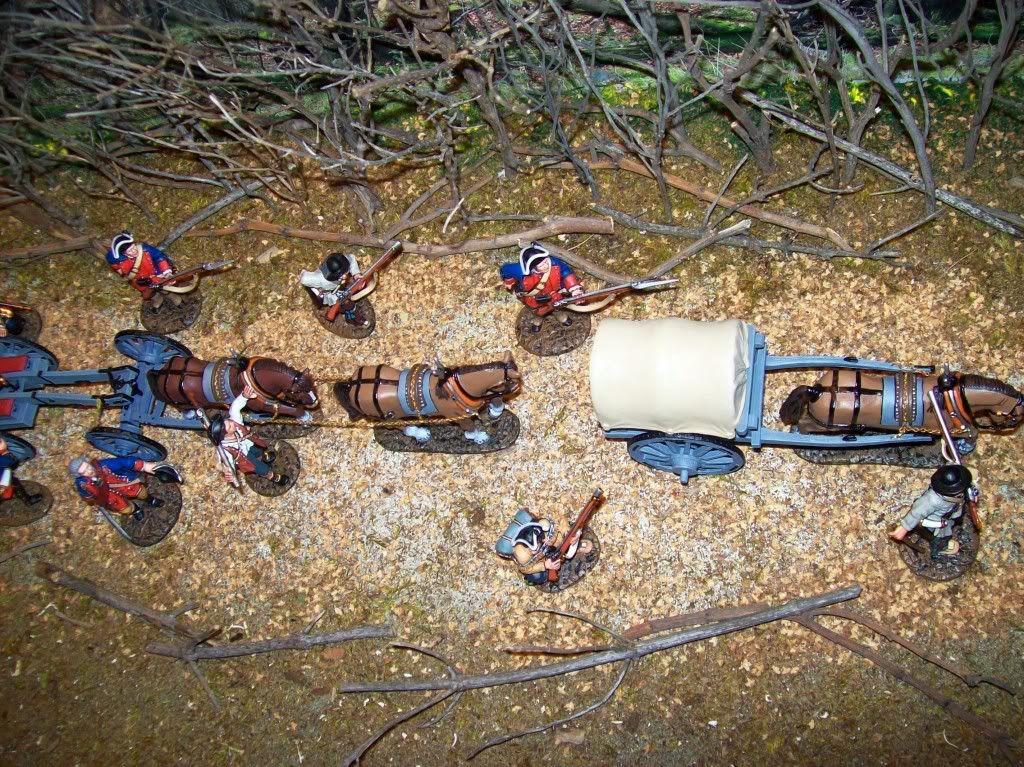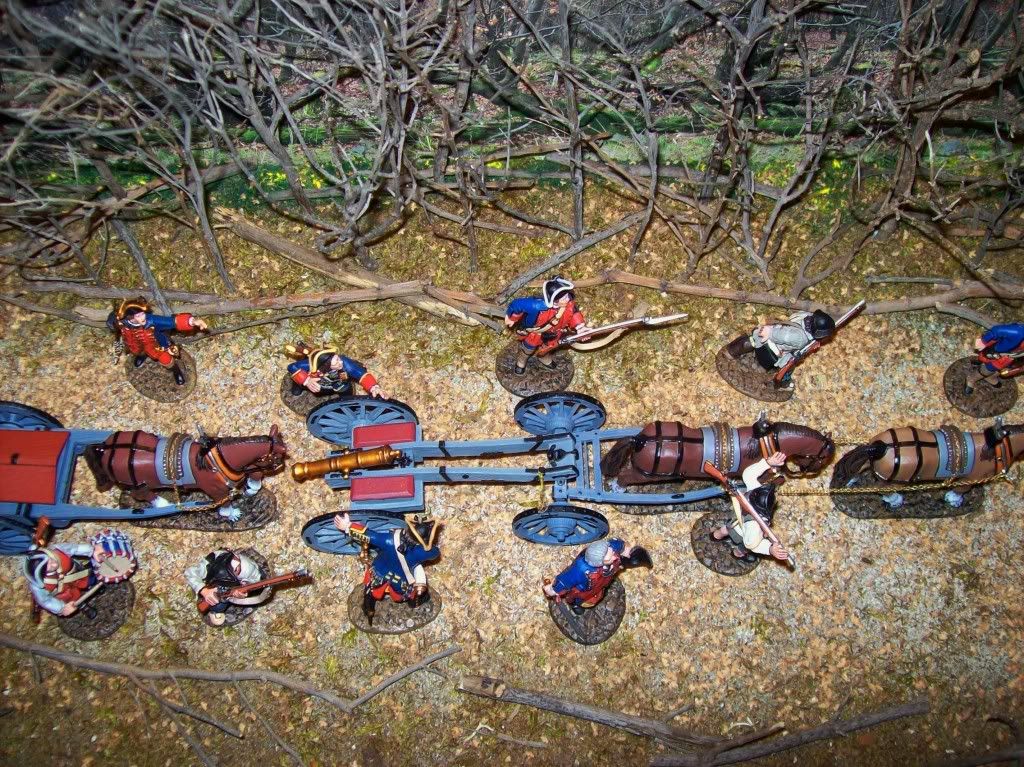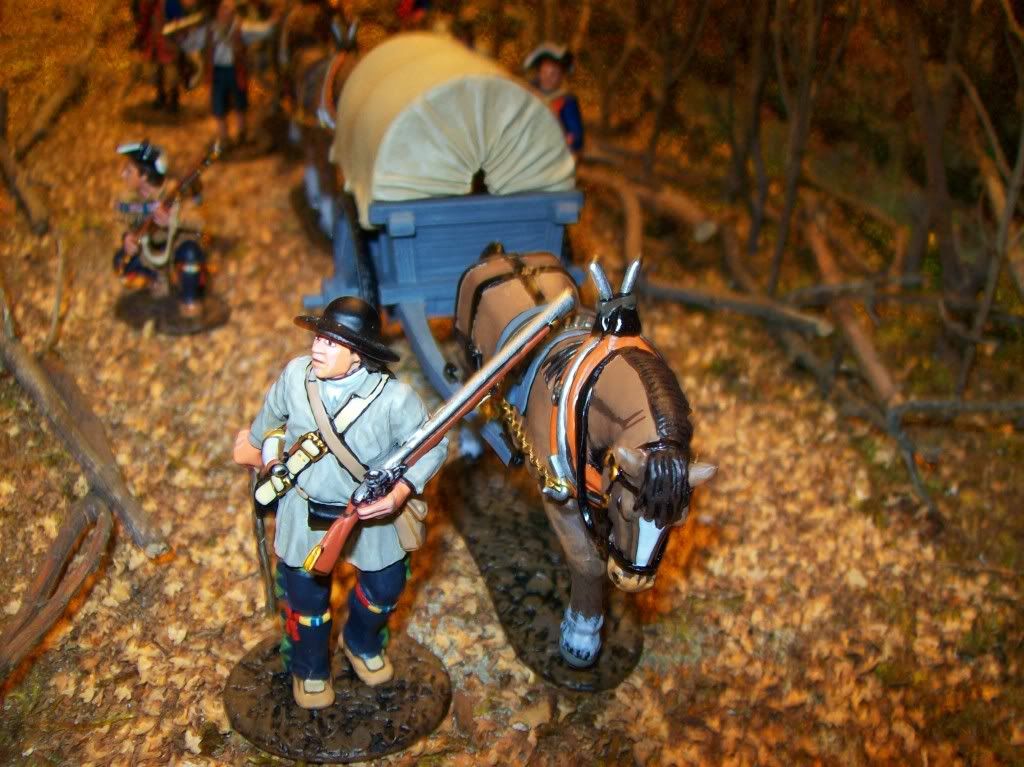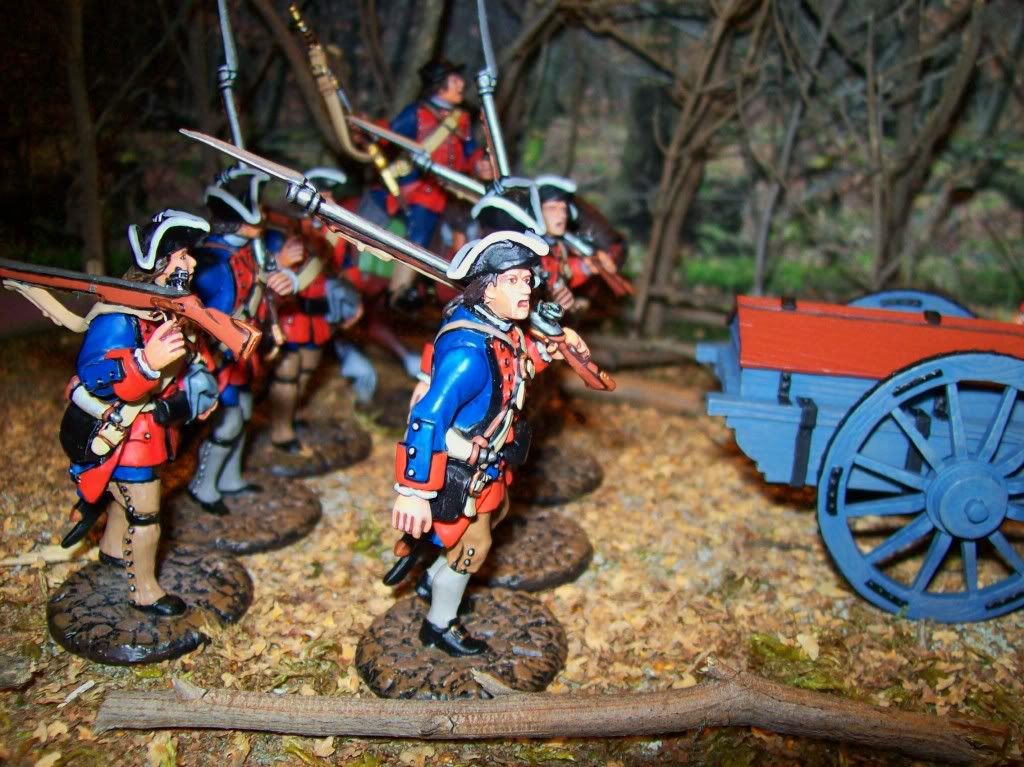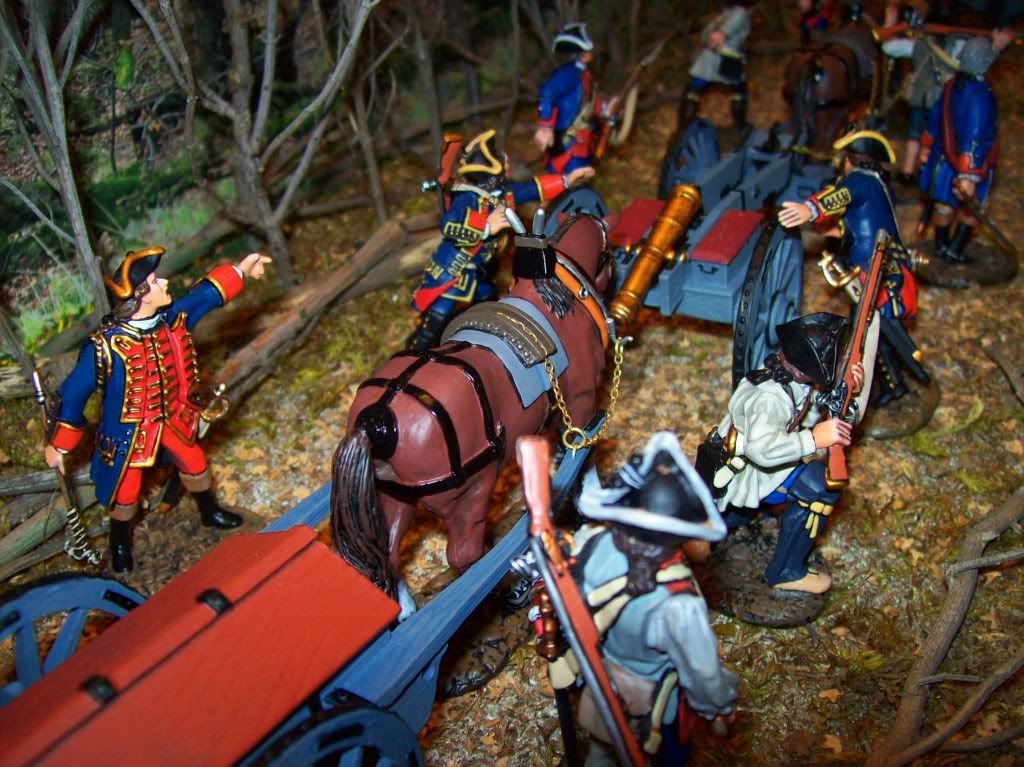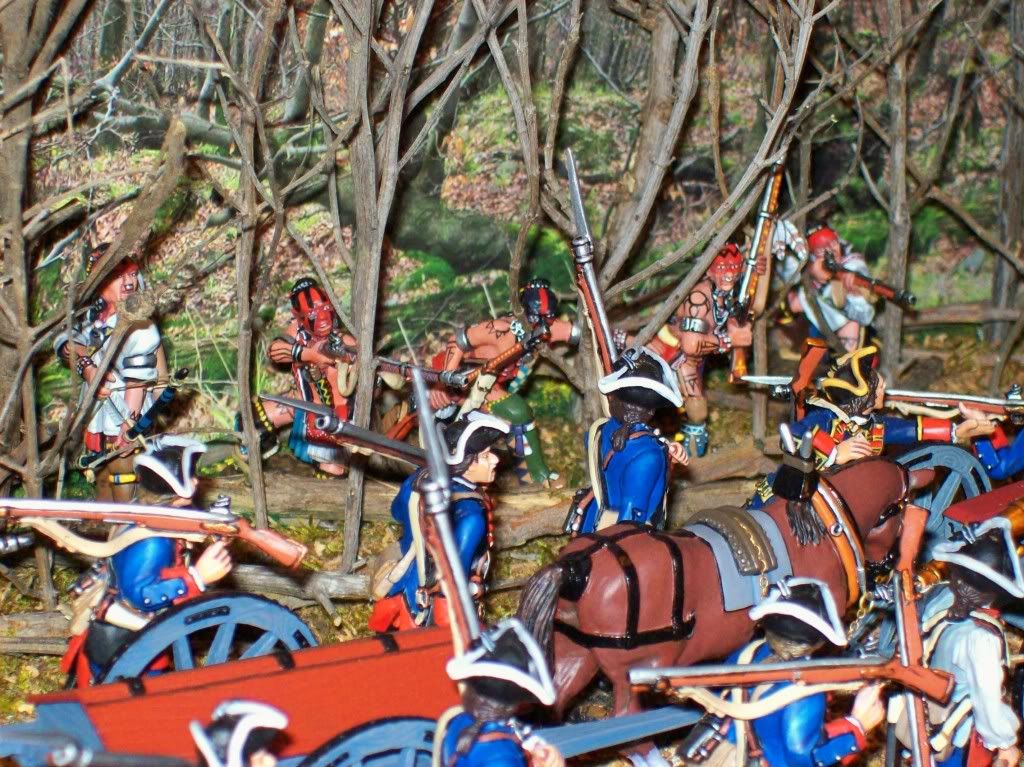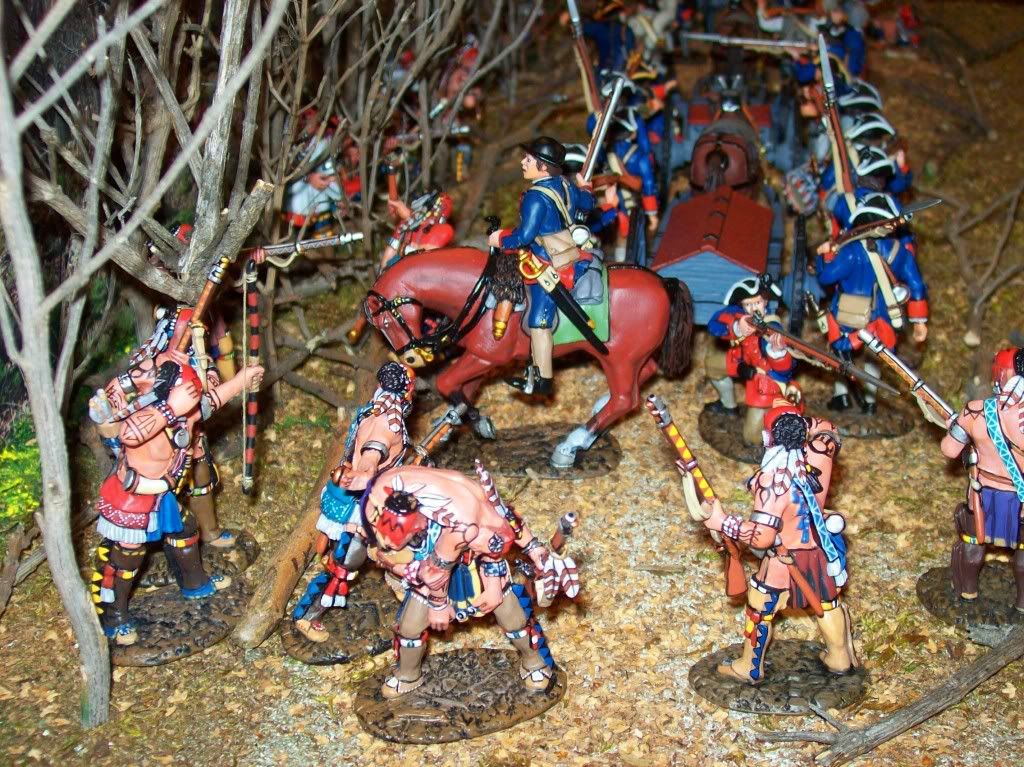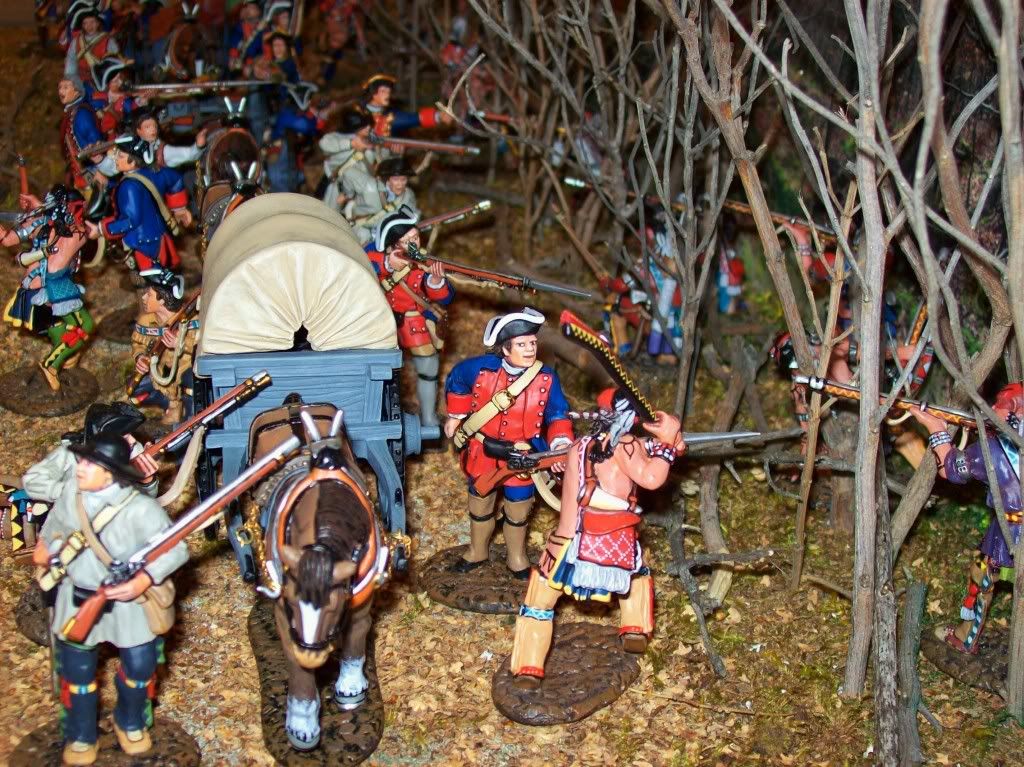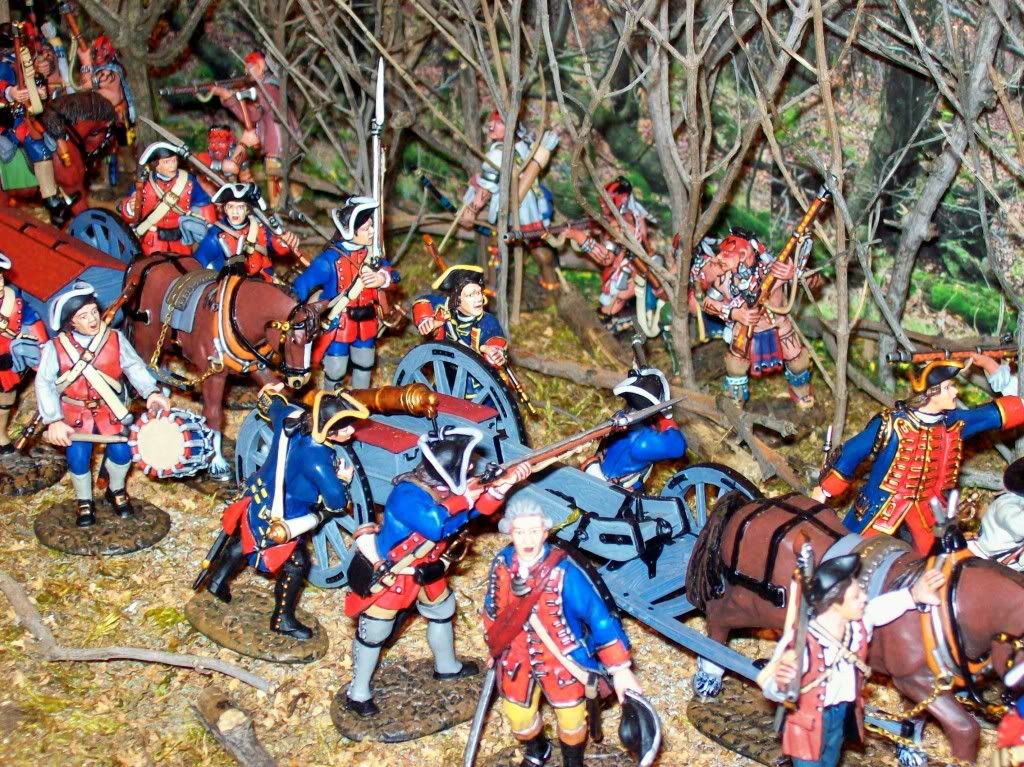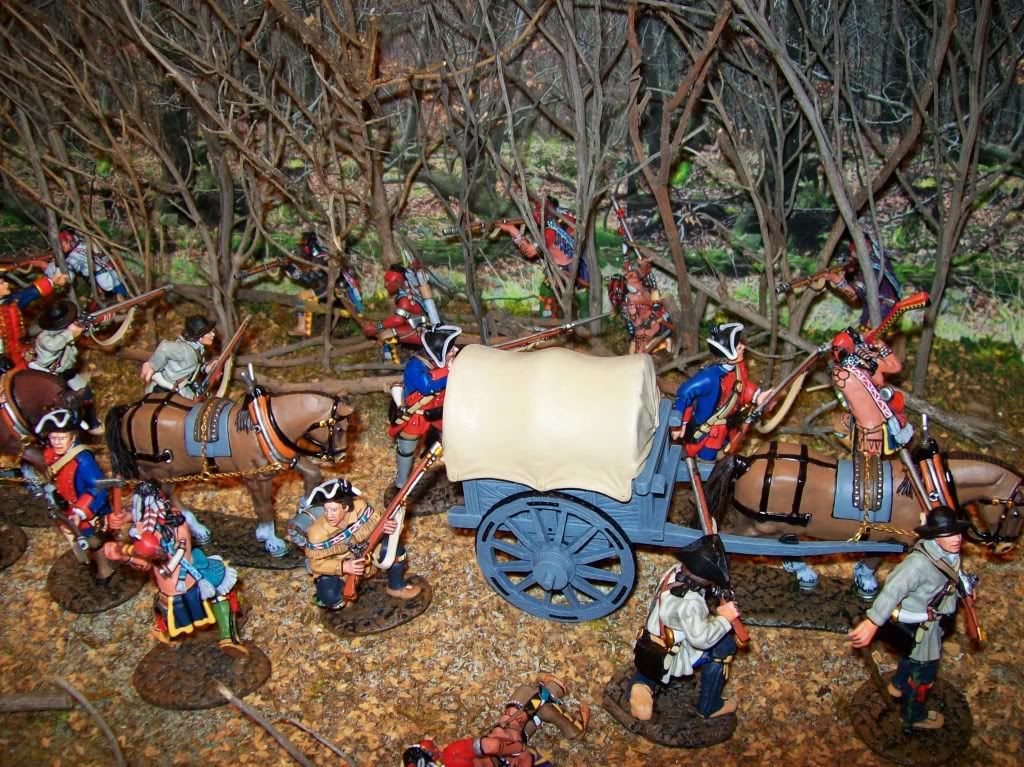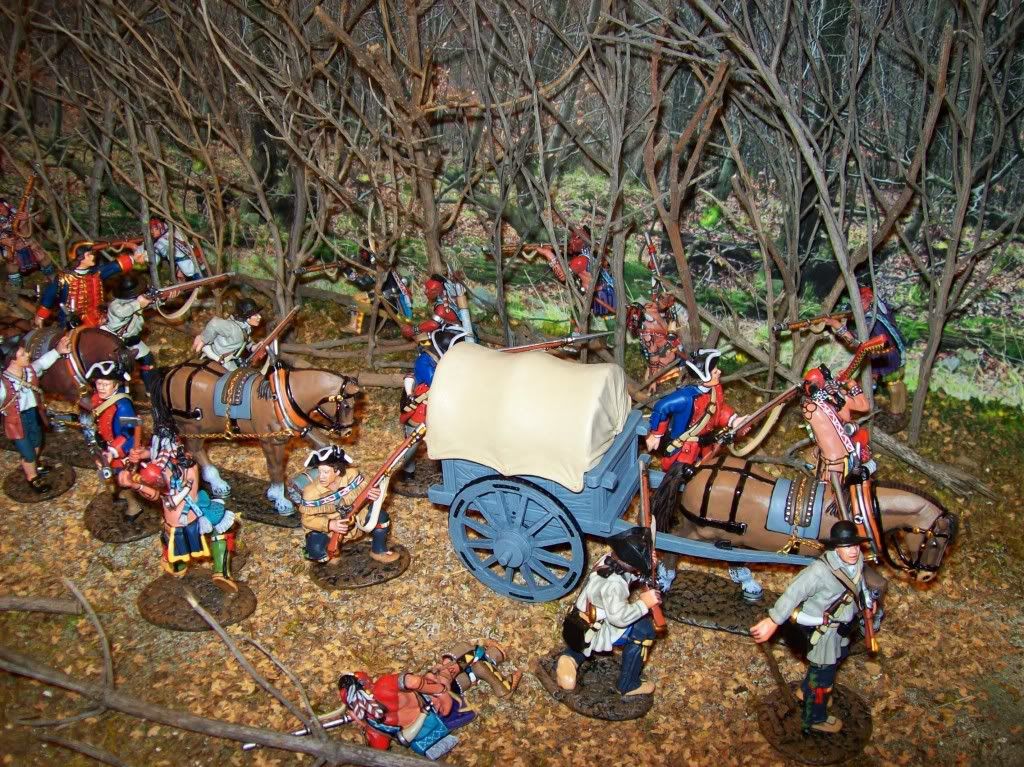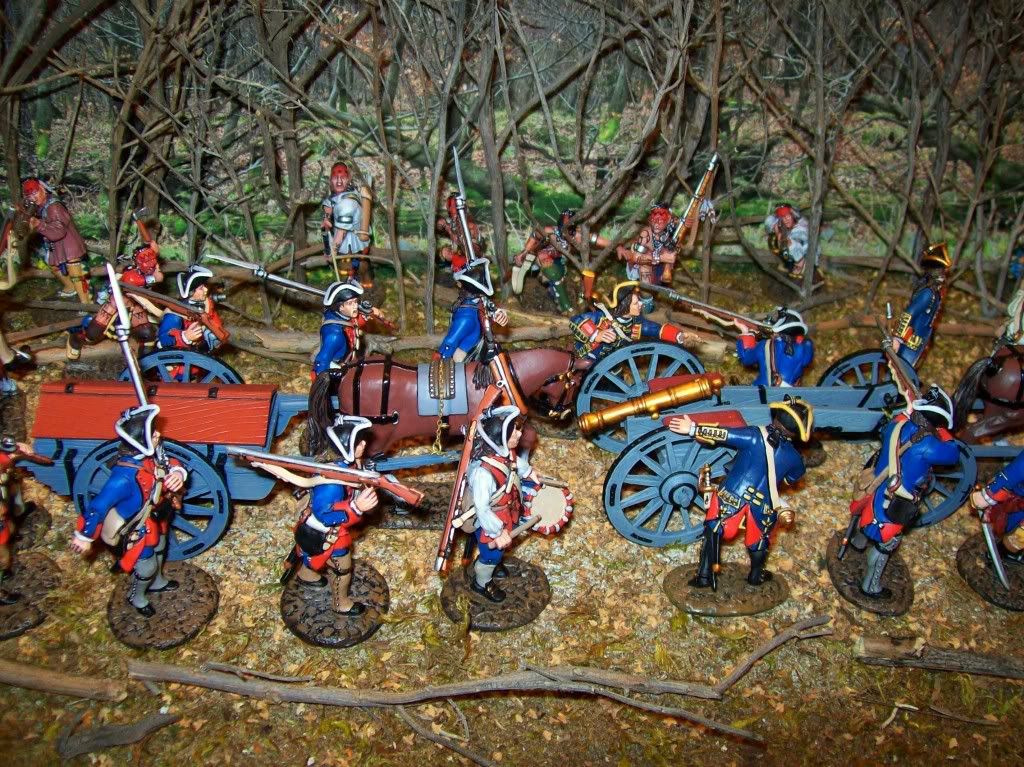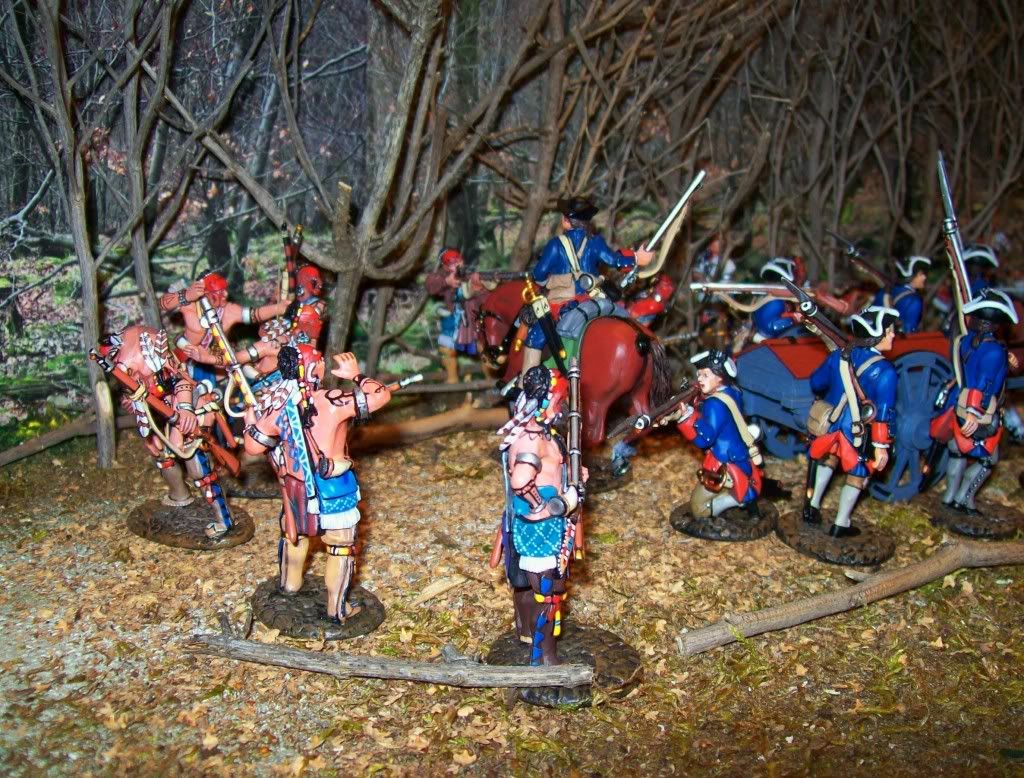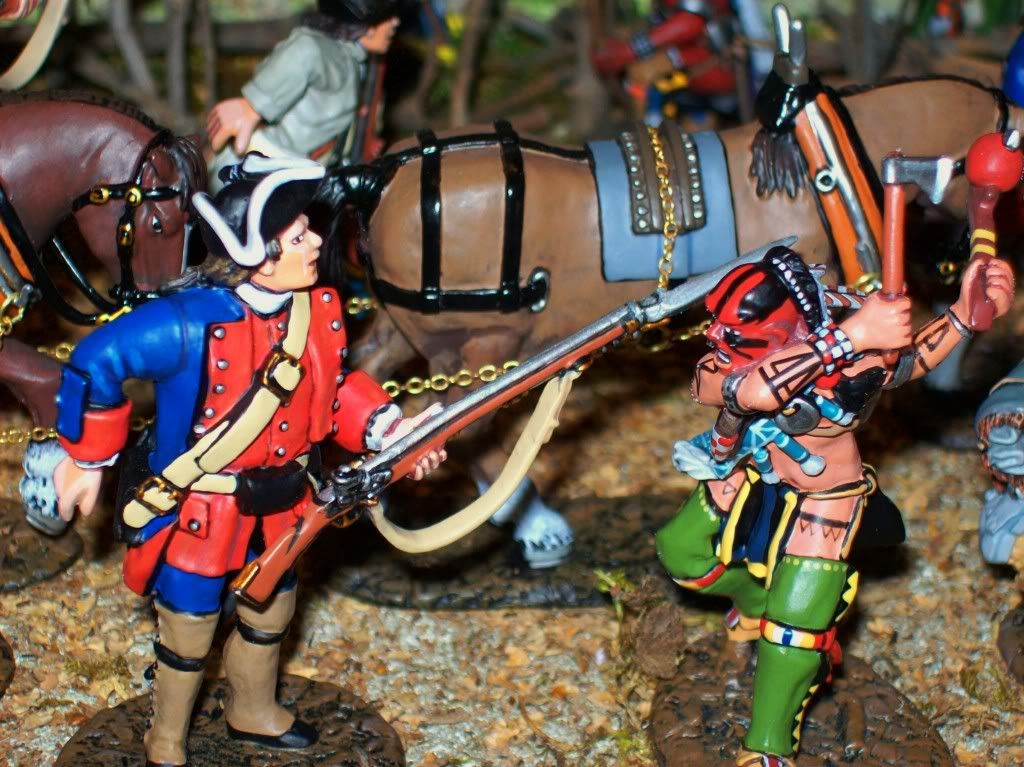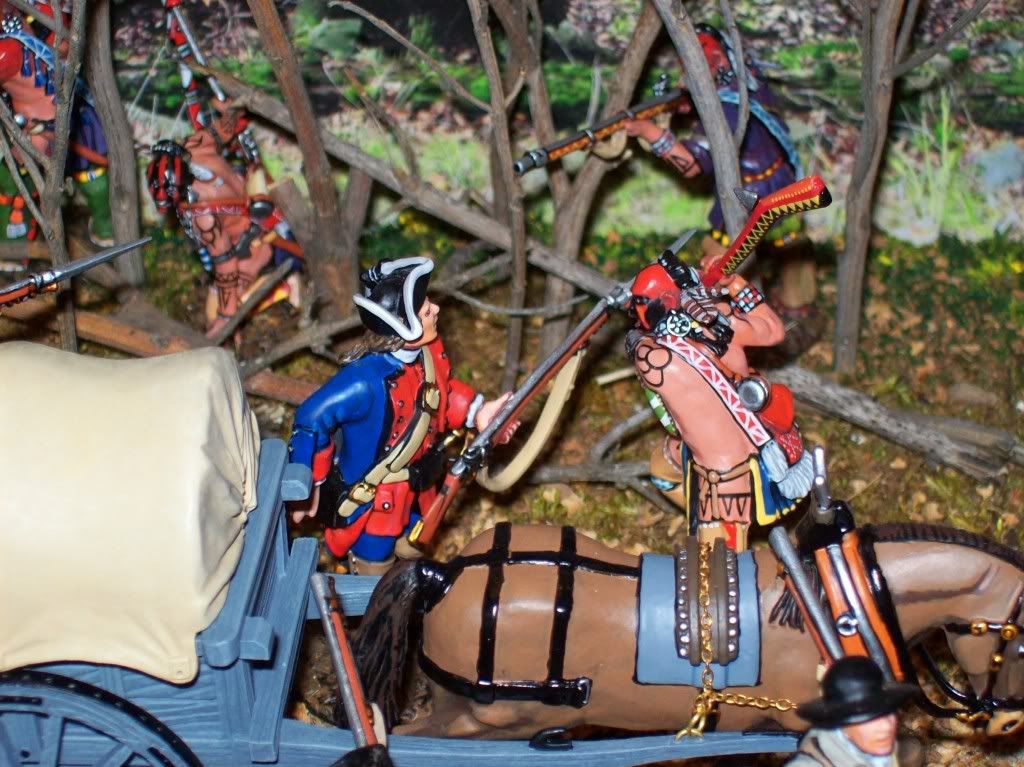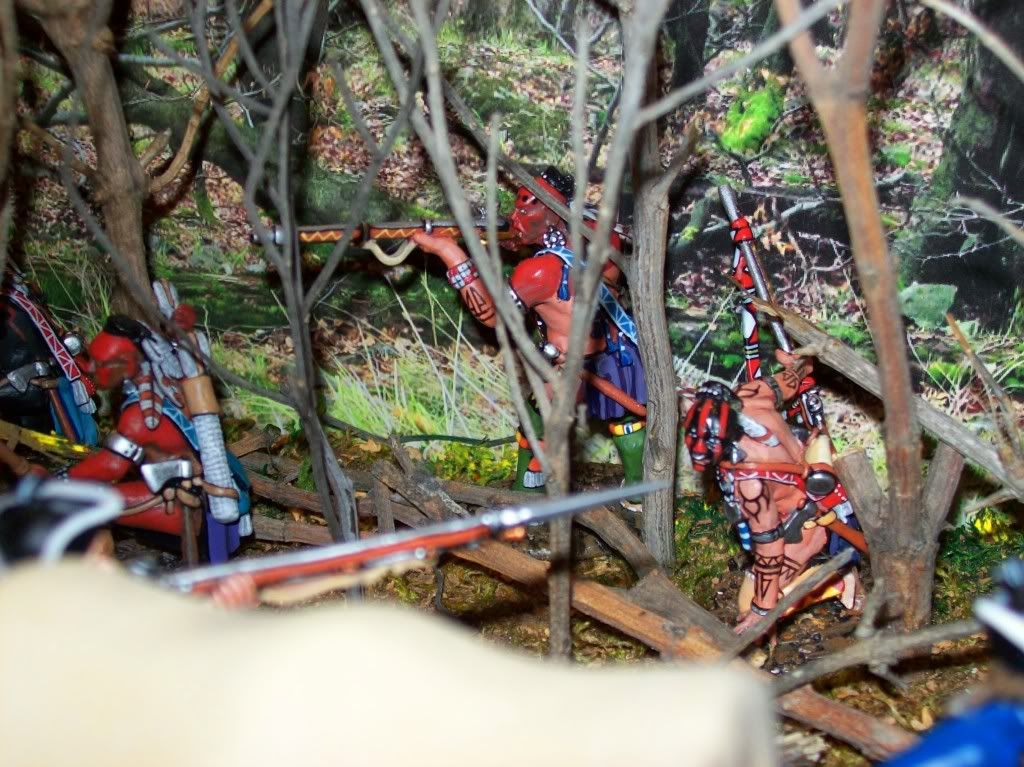mikemiller1955
Lieutenant General
- Joined
- Aug 3, 2008
- Messages
- 17,583
The Virginia Provincial Regiment was formed in 1754, and one of its main duties was to man the chain of small forts and patrol along the frontier during the war.
The Regiment served at Fort Necessity,
and with Braddock at Monongahela,
as well as several other expeditions and campaigns during the French and Indian war.
Braddock's expedition was just one part of a massive British offensive against the French in North America that summer.
As commander-in-chief of the British Army in America, General Braddock led the main thrust against the Ohio Country with a column some 2,100 strong. Braddock's command consisted of two regular line regiments, the 44th and 48th with about 1,350 men also, about 500 regular soldiers and militiamen from several British American colonies and artillery and other support troops.
With these men Braddock expected to seize Fort Duquesne easily, and then push on to capture a series of French forts, eventually reaching Fort Niagara.
Setting out from Fort Cumberland in Maryland on May 29, 1755, the expedition faced an enormous logistical challenge: moving a large body of men with equipment, provisions, and (most importantly for the task ahead) heavy cannon, across the densely wooded Allegheny Mountains and into western Pennsylvania, a journey of about 110 miles.
The expedition progressed slowly because Braddock insisted in making a road to Fort Duquesne, in some cases moving as few as two miles a day, creating Braddock's Road—an important vestige of the march—as they went.
This diorama is supposed to represent the Virginia Provencial Regiment transporting equipment on
Braddock's Road.

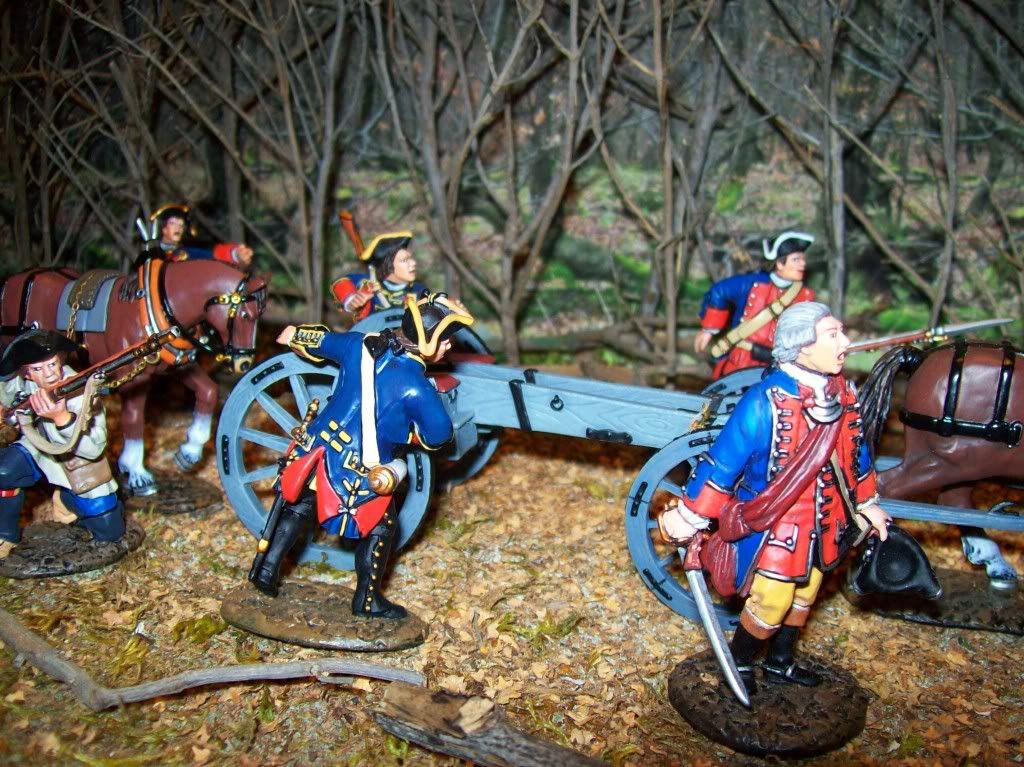
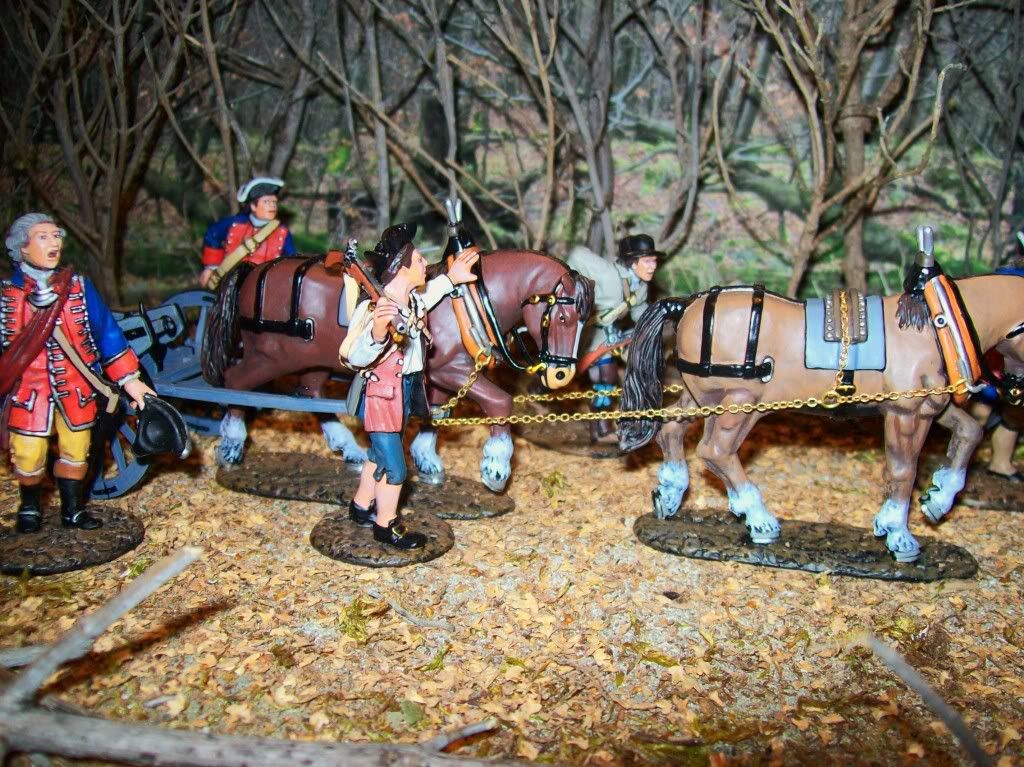
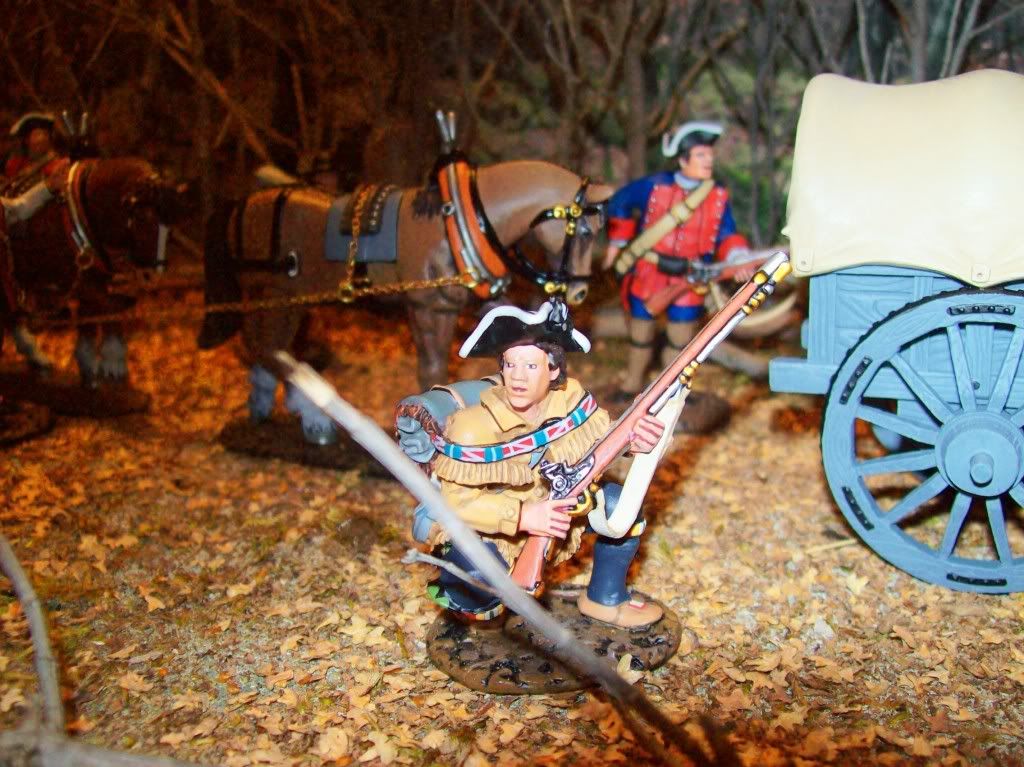
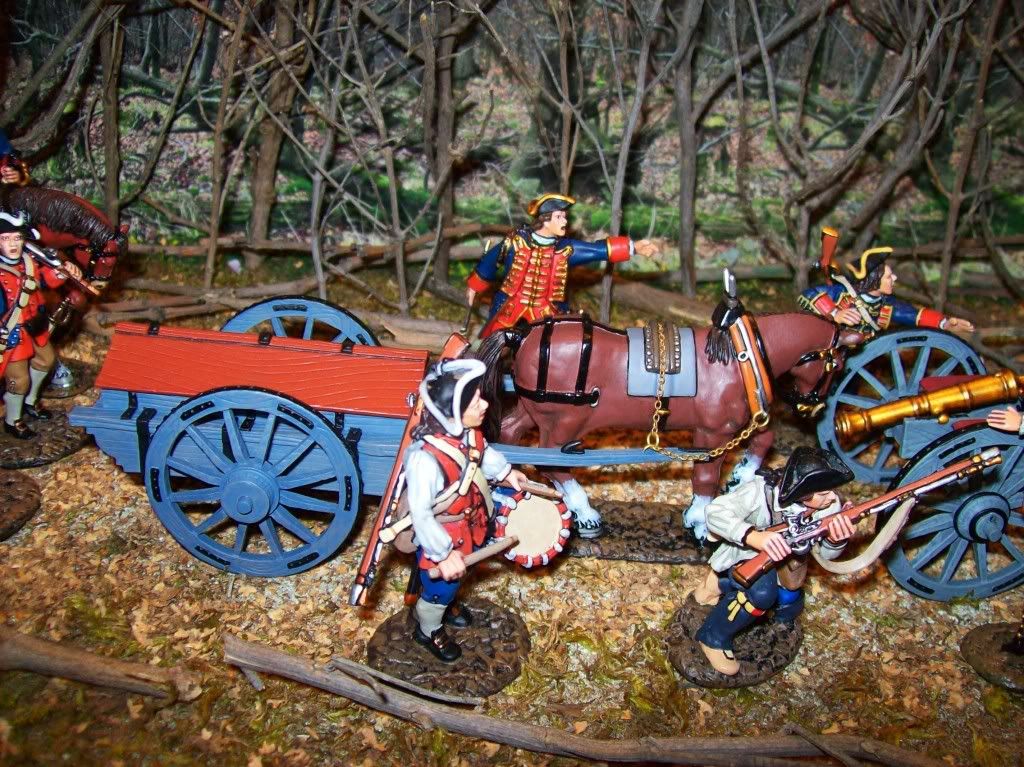
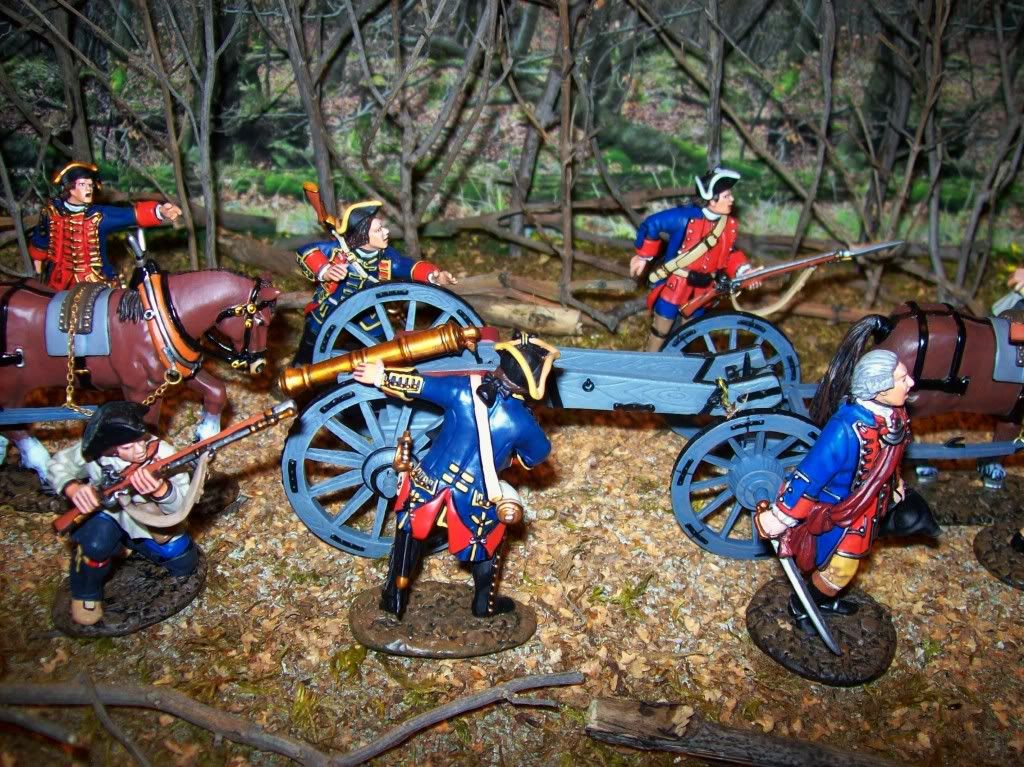

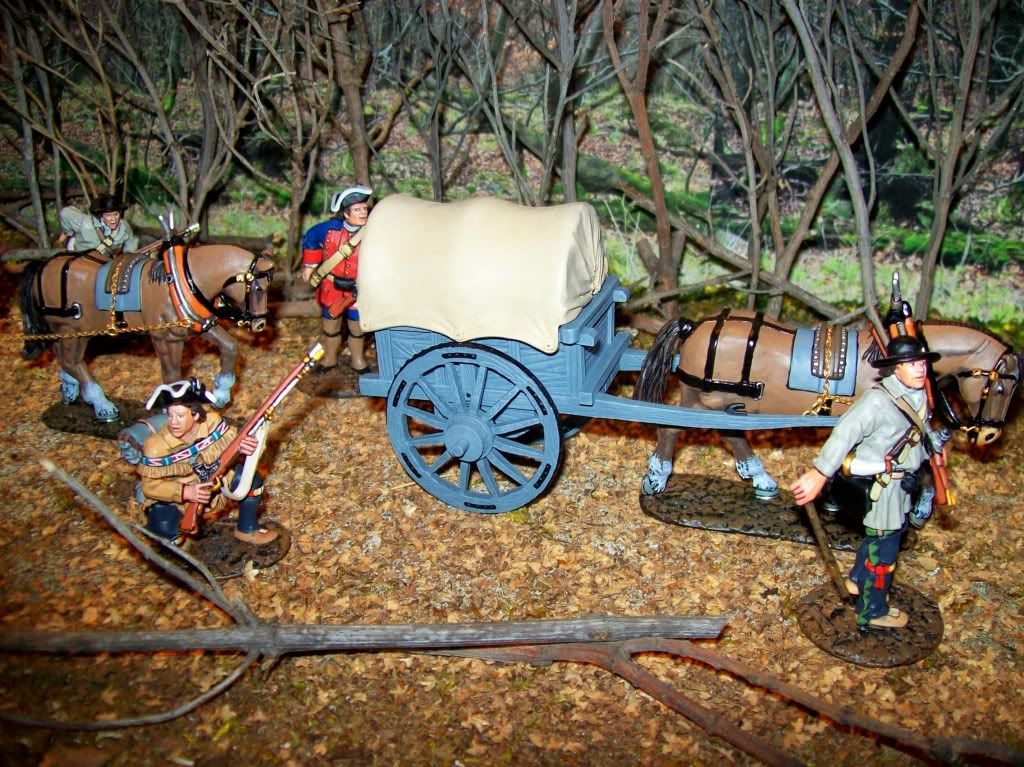
Michael
The Regiment served at Fort Necessity,
and with Braddock at Monongahela,
as well as several other expeditions and campaigns during the French and Indian war.
Braddock's expedition was just one part of a massive British offensive against the French in North America that summer.
As commander-in-chief of the British Army in America, General Braddock led the main thrust against the Ohio Country with a column some 2,100 strong. Braddock's command consisted of two regular line regiments, the 44th and 48th with about 1,350 men also, about 500 regular soldiers and militiamen from several British American colonies and artillery and other support troops.
With these men Braddock expected to seize Fort Duquesne easily, and then push on to capture a series of French forts, eventually reaching Fort Niagara.
Setting out from Fort Cumberland in Maryland on May 29, 1755, the expedition faced an enormous logistical challenge: moving a large body of men with equipment, provisions, and (most importantly for the task ahead) heavy cannon, across the densely wooded Allegheny Mountains and into western Pennsylvania, a journey of about 110 miles.
The expedition progressed slowly because Braddock insisted in making a road to Fort Duquesne, in some cases moving as few as two miles a day, creating Braddock's Road—an important vestige of the march—as they went.
This diorama is supposed to represent the Virginia Provencial Regiment transporting equipment on
Braddock's Road.








Michael


